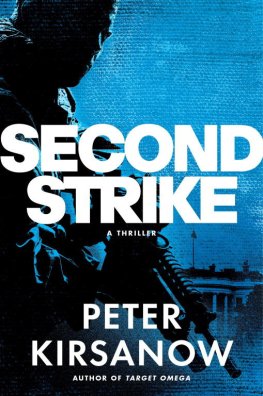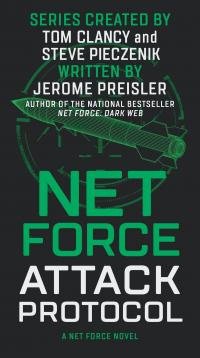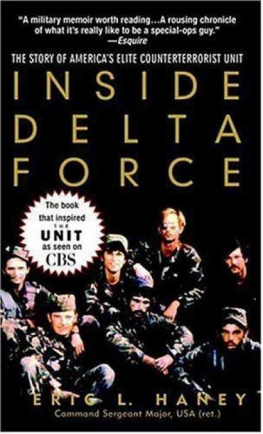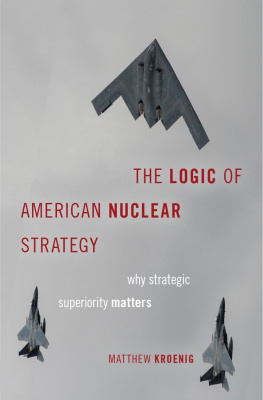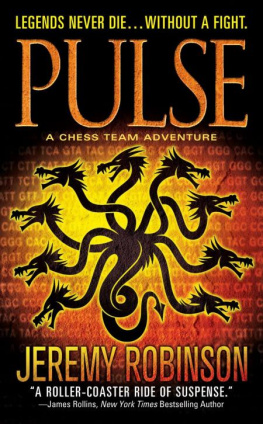Peter Kirsanow
SECOND STRIKE
We shall fight on the seas and oceans, we shall fight with growing confidence and growing strength in the air, we shall defend our island, whatever the cost may be, we shall fight on the beaches, we shall fight on the landing grounds, we shall fight in the fields and in the streets, we shall fight in the hills; we shall never surrender.
WINSTON S. CHURCHILL
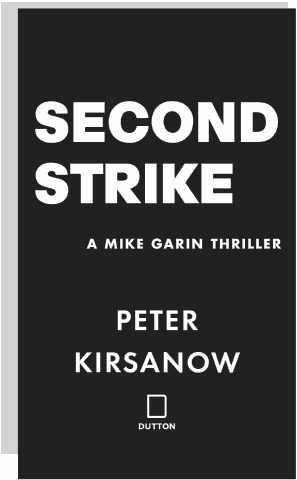
Pain is functionally irrelevant to the doomed.
Pain is an alarm, an early warning signal to the living: Damage has been done to the body, damage that, if not abated, could lead to disability or death. It is the basest of survival mechanisms.
But for the doomedmore precisely, the very soon to be deadpain is superfluous. It serves no useful purpose.
To Michael Garin, whose timeline was almost at zero, the deep gash on his right shoulder that trailed nearly to his elbow was, therefore, a temporary irritant. The guard, now deceased, who had serendipitously inflicted it had caused little more than a distraction. Garins objective remained uncompromised.
A mistake had to be rectified, a mistake that was potentially catastrophic. Garin, moving silently up the stairs toward the lower level of the fuel fabrication facility, M56 submachine gun pressed against the lacerated shoulder, was charged with correcting that mistake. Successive administrations had let the problem fester, hoping that it would resolve itself or that China would assume some measure of control over its lunatic client. But the lunacy grew unabated until it became clear that a crisis was emerging, one that would escalate from peninsular conflict to regional battle to war.
Garins Omega teamcomprised of eight tier-one special operators trained to interdict and destroy rogue WMD programsshould have been deployed sooner, but political advisors in the White House and careerists in the State Department had insisted on a graduated diplomatic approach to induce Pyongyang to curb, if not abandon, its nuclear weapons program. The approach failed. Nuance and sophistication had rarely been effective approaches toward the hermit kingdom.
President Clarke, with just over a month left in his administration, opted to launch a series of cyberattacks against North Korean nuclear weapons facilities and its missile launches to sabotage its nuclear program.
The cyberattacks succeeded, causing their missile payloads to crash into the Sea of Japan. But then someone got too clever and decided to disguise the attacks as South African. Until then, the North Koreans believed the misfires had stemmed from ineptitude, but once they discovered the true cause, they employed remedial measures to thwart the attacks. But not before their mercurial leader ordered the missile program to be ramped up significantly, creating a dangerous instability in the region.
The incoming Marshall administration determined direct action was necessary. As a feint, reports were leaked that SEAL Team Six had been deployed for a decapitation strike against North Korean leadership. The rumor was that the team was aboard the aircraft carrier USS Vinson in the Sea of Japan. This, planners expected, would cause North Korea to harden its defenses on its east coast. Omega, however, would enter the country from Korea Bay, on the opposite coast, and make their way inland to the nuclear weapons complex at Yongbyon, approximately seventy miles north of Pyongyang.
It had taken the Omega team more than eight hours to stealthily maneuver around the dense coastal patrols and move just one mile inland. From there they rendezvoused with a civilian contractor for the South Korean National Intelligence Service, who conveyed them forty miles by panel van to the outskirts of Yongbyon. They breached the heavily guarded perimeter of the Yongbyon Nuclear Scientific compound, crawling through a claustrophobic tunnel constructed by another group of civilian contractors, and emerged in a storage room in the subbasement of the nuclear fuel rod fabrication plant.
Garin led the team cautiously down a long, dimly lit concrete corridor under the main floor of the facility. Intelligence indicated that the facility would be largely empty of personnel at this time of night, with only a handful of security guards on the main floor. But, then, intelligence had failed to anticipate the guard in the stairwell with a bayonet affixed to his rifle. Garin, having dispatched the guard with a thrust of a tactical knife to the throat, moved slowly nonetheless, his team following in intervals of five to six feet. Each wore a balaclava and was outfitted exclusively with weapons and gear used by the Korean Peoples Army Special Operations Forces to limit evidence of any US involvement in the operation. Of course, if any of them were killed it would be clear the team was of Western origin; thus, their unstated protocol was that none of them would be captured.
Following immediately behind Garin was John Gates, who moments before had deposited twenty kilograms of Semtex beneath the center of the main floor. Behind him was Gene Tanski, a former Delta operator, who deposited another twenty kilograms of Semtex. Two other quantities of Semtex had been placed at opposite ends of the facilityone between powder vaporization and powder production and the other at powder processing. The engineers assured Omega that simultaneous detonations would collapse the facility. Theyd already planted two other packages of Semtex at strategic locations in the adjacent reprocessing building, where weapons-grade plutonium was separated from spent fuel rods.
Garin began moving his team more quickly, with only minutes before the packages were to be detonated. Four facility guards appeared around the corner ahead. Garin struck the lead guard in the left eye socket with an SOG tactical knife, then spun to his right and whipped his arm toward the second guard, the knife penetrating the guards right temple. Before the trailing guards could react, John Gates sprang forward and jammed his own blade in the third guards solar plexus, withdrew it, and, with an overhead arc, thrust the blade into the throat of the last guard. Elapsed time: a shade under five seconds.
Garin signaled to his team to move forward, the group continuing to quicken their advance. As they neared the entrance to the tunnel, obscured behind and between two massive compressors, Manny Camacho, bringing up the rear, stage-whispered to Garin, Boss, you need to see this.
Garin glanced back at Camacho, who was pointing at the entrance to a room to the right. The look on his face was one of astonishment. Garin turned back and entered a room that appeared to be for storagebut the only items within it were four high-backed metal chairs with what appeared to be a human being strapped to each. Their faces were mutilated and their scalps had been pulled from the tops of their respective skulls down to their shoulders, the skin hanging limply across their chests like bibs. Pools of blood were congealed on the plastic-covered floor beneath them. A scene that transcended hell.
Garin knew they needed to keep moving, but as he motioned his team onward he had a sickening sense that he would soon encounter the author of that scene.
LOGAN AIRPORT,
AUGUST 14, 6:35 A.M. EDT
It was all so much nonsense, she thought. Deliriously theoretical nonsense. Almost science fiction. Nonetheless, Meagan Cahillno-nonsense big-firm litigator Meagan Cahillsat at the counter of an eatery in Terminal B of Bostons Logan Airport, sipping iced coffee and listening as Ryan Moore Hammacher once again expounded ominously on something called the Arlanda Event.

